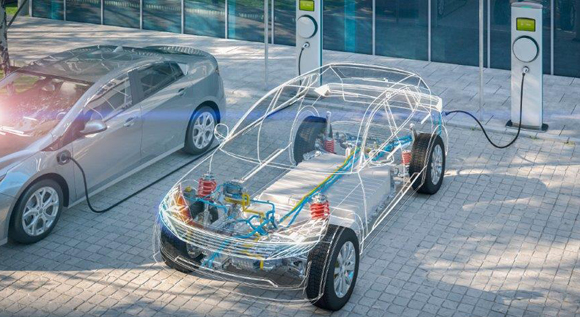E-cars: next generation battery housing
More charging power, more range, more climate-friendly: the CoolBat research project aims to make battery housings in electric cars lighter and reduce CO2 emissions during production.
 © Adobe Stock / Herr Loeffler
© Adobe Stock / Herr Loeffler
The CoolBat research project is investigating how innovative design principles, materials and production processes can help to manufacture housings for battery systems in a climate-friendly way and with better usage properties. When the housings are lighter, the range of electric cars increases. At the same time, the researchers want to improve the performance of the batteries and provide faster charging. With the aid of new findings (relating to lightweighting in particular), the production of the housings is expected to become significantly more efficient compared with previous methods.
Individual systems are combined
To this end, every development step is closely evaluated for its CO2 saving potential and CO2 sequestration. This is because the elements of the battery system of an e-car include not only the battery module itself with its cells, but also the housing with structures for load distribution and temperature regulation. These include frames, lids and base plates. They protect the batteries from overheating and also from damage in the event of an accident. The researchers now want to integrate more functions in a smaller installation space with fewer interfaces. To achieve this, they are combining individual systems that in future will combine thermal and mechanical tasks. Load-bearing structures will in future have so-called temperature control channels cast directly into them. In the base plates, for example, the function of the cooling unit will be combined with that of crash protection in a single component.
Aluminium foam makes it all possible
This is achieved with aluminium foam. In the event of an accident, the lightweight material absorbs a lot of the energy generated by the impact. The aluminium foam is combined with a so-called phase change material, which can store large amounts of heat and cold energy and release it again as needed. The combination of the two materials also reduces the energy required to cool the electric battery. The covers of the battery housing are designed in such a way that the housing can optimally absorb the loads acting on it.
The project team is also developing and testing new thermal conductive materials. They replace previously complexly manufactured and therefore expensive and less environmentally friendly thermal conductive pastes. Attention is also given to the use of sustainable materials for fire protection. As a result of such integrated lightweight solutions, it will be possible in future to achieve 15 per cent CO2 savings per battery housing. This means there is still considerable optimisation potential in today's battery housings.
Blueprint for other sectors and applications
Launched in May 2021 and scheduled to run until April 2024, the „CoolBat research project - CO2-saving lightweight construction solutions using a demonstrator. Next generation battery housings” - is funded by the BMWK in the Technology Transfer Programme for Lightweight Construction (TTP LB) with around 2.9 million euros. The results are to be transferred at a later date to other applications and sectors where large batteries are used - for example in trains, aircraft and ships, or for food and medical shipments.
The project partners are the Fraunhofer Institute for Machine Tools and Forming Technology IWU (coordination), Auto-Entwicklungsring Sachsen FES/AES, Fraunhofer IFAM (Fraunhofer Institute for Manufacturing Technology and Applied Materials IFAM), Fraunhofer IST (Fraunhofer Institute for Surface Engineering and Thin Films IST), Fraunhofer WKI (Fraunhofer Institute for Wood Research Wilhelm-Klauditz Institut WKI), INVENT, Compositence, iPoint, TIGRES, LXP Group, Basdorf, Lampe & Partners and MID Solutions.

